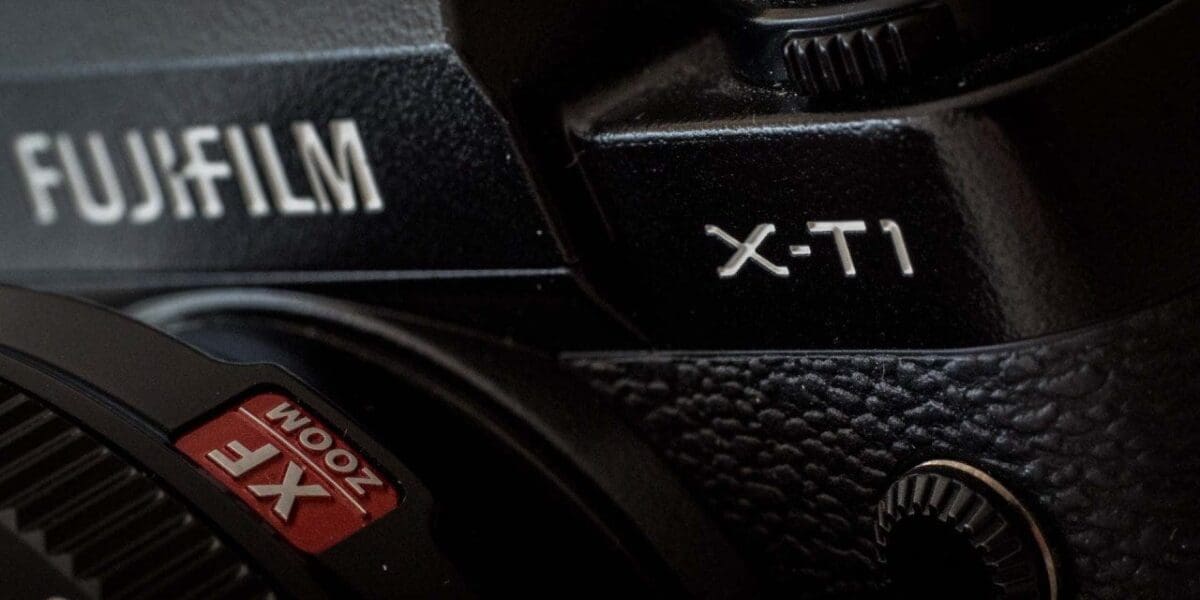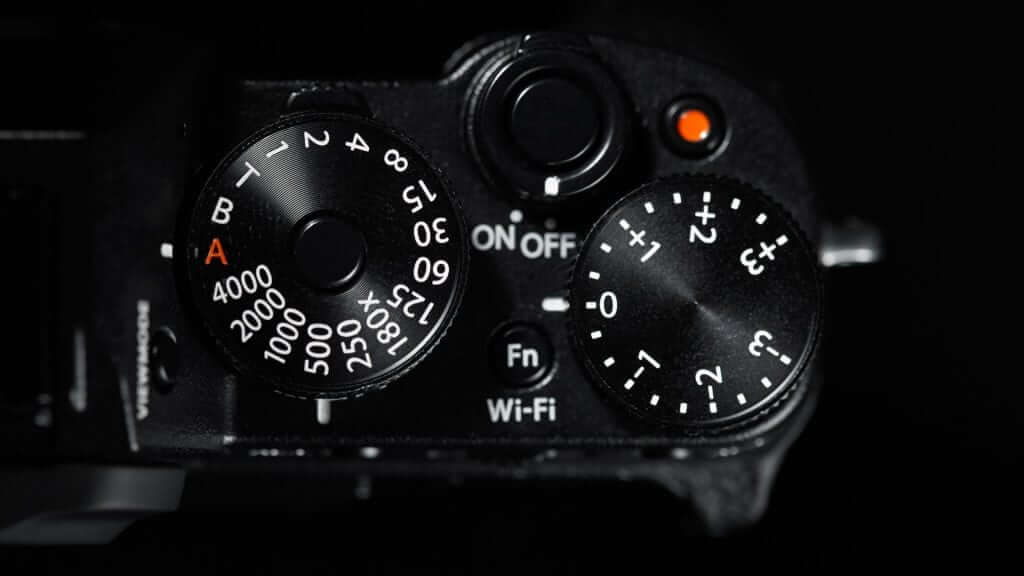Fuji X-T1
Traditional exposure controls combined with a rugged build, SLR-like design and attractive images have made this CSC a popular choice for enthusiast photographers. Find out how it performs in our Fuji X-T1 review…
30 second Fuji X-T1 review…
If you just glanced at the top and front of the Fuji X-T1 you could be forgiven for thinking that it was a film SLR of some age. The collection of dials and pentaprism-esque hump on the top-plate give it a traditional air, but inside it houses an excellent sensor and there’s a high quality LCD screen on the back along with an excellent OLED viewfinder that can show images as they will be captured or ‘au naturale’ like an SLR’s. The traditional controls are well implemented and there’s a first-rate Quick Menu system for making settings adjustments.
The X-T1’s filmic theme extends to the images which have attractive colour, good detail and pleasant mid-tone contrast.
Key features
| Camera type | CSC |
| Date announced | 28th Jan 2014 |
| Price at launch | £1,049.99/$1,299.95 (body only) |
| Sensor size | APS-C (23.6 x 15.6mm) |
| Effective pixel count | 16.3 million |
| Processor | EXR Processor II |
| Lens/Mount | X |
| Viewfinder | 0.5-inch OLED with 2,360,000 dots |
| Sensitivity range | ISO 200-6400 expandable to ISO 100-51,200 |
| Reflex AF system | N/A |
| Live View AF system | Hybrid with up to 49 points |
| Monitor | Tilting 3-inch LCD with 1,040,000 dots |
| Max shooting rate | 8fps |
| Max video resolution | Full HD (1920 x 1080) |
| Storage | SD/SDHC/SDXC (UHS-II) |
| Dimensions | 129 x 89.8 x 46.7mm |
| Weight | 440g (body only), 390g with battery and card |
The X-T1 was the first of Fuji’s X-series of compact system or mirrorless system cameras to adopt an SLR-like design. Previously the company had opted for a rangefinder style with the X-Pro1, X-E1, X-E2, X-A1 and X-M1. And while models like the X-Pro1 and X-E2 had proved popular, the unveiling of the X-T1 moved things up a gear.
Inside the X-T1 is a 16.3 million pixel APS-C format X-Trans CMOS II sensor – that’s the same device as is found in Fuji’s X-E2 and X-E2S. Some of the pixels on this sensor are used for phase detection focusing by the camera’s hybrid (ie phase and contrast detection) focusing system.
The sensor is teamed with Fuji’s EXR Processor and it enables a maximum continuous shooting rate of 8 frames per second for up to 47 Fine quality JPEGs or 23 raw files when a UHS-II SD card is installed. In addition, the standard sensitivity range is ISO 200-6400 but this can be expanded to ISO 100-25,600 provided that you are happy to only record JPEG files at the expansion settings.
Fuji’s Film Simulation modes have proved popular and firmware version 3.0 added a new one to the X-T1, Classic Chrome. This produces muted, earthy colours that work well for a variety of subjects.
Fuji X-T1 Build and handling
The X-T1’s bodyshell is made from cast magnesium alloy which gives it a robust feel. In addition, the body is weatherproof when used with one of Fuji’s growing range of weatherproof (WR) lenses. It’s also designed to continue to function down to -10C.
Fuji has given the X-T1 a good-sized finger grip with a grippy textured coating that makes the camera feel safe in your hand.
Although the X-T1 has the same 2.36 million-dot OLED electronic viewfinder (EVF) as the X-2 and X-E2S, it’s bigger and has a magnification factor of 0.77x. It provides a wonderfully detail view of the scene and has convinced many EVF doubters that they have something to offer, although it has to be said that there is sometimes a slight lag in the image.
While the EVF is designed to show the image as it will be captured taking into account camera settings, Fuji added a ‘Natural Live View’ option with firmware version 3.0. When this option is activated the viewfinder behaves like the optical device of an SLR and doesn’t reflect adjustments made to exposure and the like.
It’s also possible to show focus peaking or a Digital Split Image to help with manual focusing. We found the focusing peaking option easier to use but there are some who favour the split image.
On the back of the X-T1 there’s a 3-inch 1,040,000-dot screen that can be tilted up or down to aid landscape format image composition above or below head height. It offers a clear view and although reflections can be an issue in very bright light, it’s not a major issue in most situations.
Like most of Fuji’s other X-series compact system cameras (the X-A1, X-A2 and X-M1 are notable exceptions) the X-T1 has traditional exposure controls. In addition to a shutter speed dial with settings running from 1-1/4000 sec and a metering mode dial underneath, the X-T1 has a sensitivity dial with a secondary dial underneath for setting the drive mode. Meanwhile over to the right of the top-plate as you hold eh camera of ruse is an exposure compensation dial.
When a lens with an aperture ring is mounted setting both the ring and the shutter speed dial to ‘A’ sets the camera to program mode. If the aperture ring is rotated to a specific value while the shutter speed dial remains on ‘A’, the camera is in aperture priority mode.
Conversely, if the shutter speed dial is set to specific value while the aperture ring is on ‘A’ the camera is in shutter priority mode. When specific values are set on bit the X-T1 is in manual exposure mode.
It’s worth noting here that version 3.0 of the X-T1’s firmware introduced an electronic shutter that can be pushed up to 1/32000sec. While this isn’t designed for shooting fast action, it can come in handy when using one of Fuji’s fast lenses wide open.
Fuji’s Quick Menu system is one of the best (if not the best) as setting can be adjusted as soon as it’s highlighted – without the need of a key press to confirmation the selection. Furthermore, version 3.0 of the firmware made this menu customisable so you can specify the options that you wish to access.
Fuji X-T1 Performance
Because Fuji X-Trans sensors have a randomised colour filter layout they don’t need a low-pass filter to reduce the risk of moire interference patterns. In our Fuji X-T1 review we found this enables the camera to capture an impressive level of detail for 16Mp camera, especially at the low end of the sensitivity range.
In Multi mode, which is designed for general shooting, the 256-zone metering system does a good job in many situations. However, it can tend towards underexposure, so the exposure compensation dial can come in handy.
Although many of the X-T1’s target audience are likely to shoot raw files, Fuji’s Film Simulation modes are popular and the new Classic Chrome mode produces attractive results. Colour reproduction is helped by the excellent automatic white balance system, which as well as working well in natural light, does a good job in artificial lighting conditions.
Fuji has been working hard on the autofocus systems in its compact system cameras and the system in the X-T1 saw a significant improvement with firmware version 4.0. In our Fuji X-T1 review we found that in good light the tracking system does a good job of keeping up with a subject as it moves around the frame and as its distance from the camera changes.
As you’d expect, it struggles more in low light but I found I was able to shoot music gigs at night. That said, it’s not as fast or as capable as the AF system inside and SLR like the Canon 5D Mark III, but it’s good enough to allow you to shoot a wide range of subjects and lots of conditions.
Fuji X-T1 Verdict
The Fuji X-T1 made a lot of photographers consider buying a compact system camera when previously they would’ve opted for an SLR. I’ve met several who were initially attracted to the Nikon Df but were put off buy the high price and investigated the X-T1 instead.
They were pleasantly surprised to find the traditional controls better implemented and the electronic viewfinder of high quality – and it can show the impact of setting adjustments.
As we used the camera in various situations for our Fuji X-T1 review we found that it also feels great in your hand, there are lot of customisation options and the images it produces are excellent.
However, the X-T1 was announced in January 2014 and following the announcement of the Fuji X-Pro2 in January this year (2016), its a safe bet that there will be an X-T2 in the near future – possibly at Photokina in September in Cologne, Germany. As Fuji tends to use the same sensors and processing engines in different camera bodies we can also be confident that the X-T2 will have a 24 million pixel sensor and X Processor Pro engine.
Nevertheless, the X-T1 is one of the best compact system cameras around at the moment.
Also consider:
Olympus OM-D E-M1 Panasonic GX8 Sony Alpha a6300
Fuji X-T10
Fuji X-Pro2







